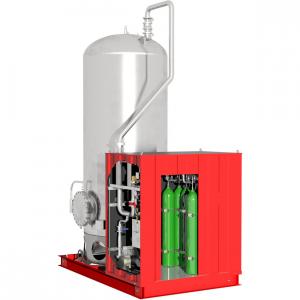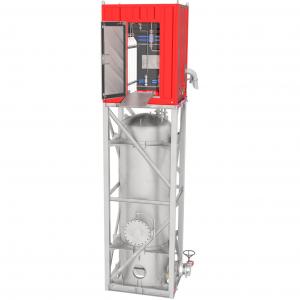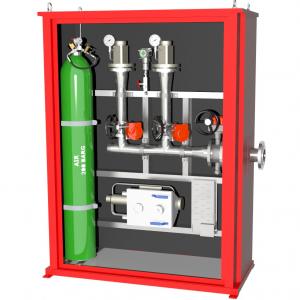Firewater system
The firewater system on and offshore platform or other oil and gas installation often has very high firewater demand supplied by very powerful firepumps. This means that there is a potential to create situations in the firewater system that can cause damaging surge pressures. Surge pressures can occur for several reasons.
The firewater system on an Offshore Oil Installation is normally built around a Firewater Ring Main (FRM), located on one of the lower decks.
Branches and risers are routed from the FRM to the individual firewater users, such as Deluge systems, Hydrants and Monitors. The firewater is fed into the FRM from large capacity Firewater Pumps (FP), located at sea level.
A Jockey Pump (i.e., a pump with low flow and high-pressure capabilities) maintains FRM pressure at all times.
Following activation of a Deluge System (a high flow firewater user), the Jockey Pump cannot keep up with the demand, and the FP’s are activated. The run-up time of the fire pumps is normally 10 -20 seconds. This means that the deluge valves open and starts to discharge water into the distribution piping before the fire pump is running.
This will cause the upper parts of the firewater distribution piping to be drained, due to gravitational force. This drainage will create a vacuum (aka. Column Separation) in the upper parts of the firewater piping.
When the Fire Pumps starts, the firewater will rapidly re-fill the drained piping, at high flow and pressure. Because of the vacuum, no air cushion is present, and this will potentially create a very large pressure surge in the system, also known as “water hammer”. Pressures exceeding 100 Barg have been experienced, resulting in serious damage to the firewater system.
FPE Sontum can supply systems which can be installed in the firewater system to eliminate this situation:
Active hydrophore system
The Active Hydrophore Unit (AHS) senses the sudden decrease in water pressure and immediately begins to discharge water into the firewater ring main, such that a positive pressure is maintained at the top of the risers.
The hydrophore units will have to be sized based on a number of factors, such as the largest fire scenario water demand, the opening characteristics of the various deluge valves involved in this scenario, the distribution piping system arrangement, the difference in elevation between the deluge skids involved in the scenario, and the top of the highest riser, etc.




